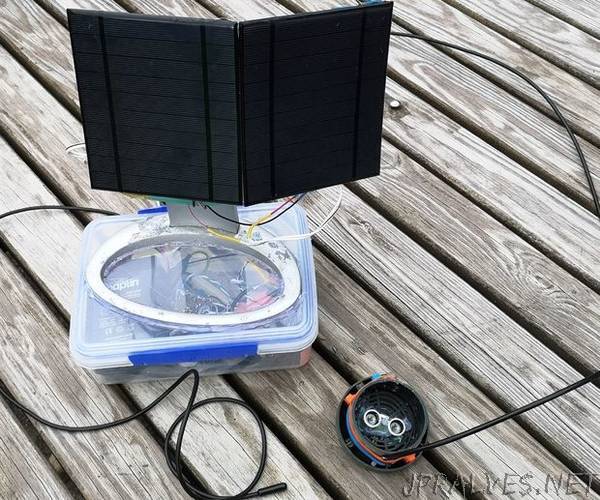
“Do you have a tank whose fluid level you want to keep track of? Even if not, you may have an idea for an IoT project, or a solar-powered project, or a Particle Photon project. This Instructable includes many useful details and photos that will teach you (among other things):
How to choose and use ultrasonic rangefindersHow to measure small bidirectional DC currents with an Arduino (battery charging and discharging)How to log and share sensor data in the cloudHow to charge your outdoor IoT project with a solar panelHow to deal with varying or unmatched voltagesDebugging. Not bugs in software, but actual bugs!I describe here a system that will send your phone and computers a Pushbullet warning if the tank needs filling. It includes data logging in the ThingSpeak cloud to monitor and share usage and other data. We have a 1000-litre kerosene tank outside our house that supplies heating oil to our boiler, which in turn distributes the hot water to radiators around the house. Unfortunately, these oil tanks are opaque and there is no easy way to know how much kerosene is left until the boiler stops working on a cold day :( Traditionally, people here in Ireland periodically poke a pole down the filling hole, an improvised dip-stick, to see how much oil is left. A fancy tank may have a sight-glass, but that still requires you to brave the cold to check it regularly. With my Oilwatcher, you can check oil levels with any phone or computer. My Instructable project was inspired by the similar one by Ventz (who was very helpful), but because I don’t have power near my tank, I had to figure out how to make mine solar powered. I also completely re-wrote the code to log various diagnostic and weather data. I have been using this setup since February 2018, and for the past few months, it has been very reliable and useful. I will describe how I built it, some of the problems I had, and the solutions I came up with. The cost to build your own would be between $100 and $200. Recently, commercial solutions have been developed, e.g. the Apollo Smart oil monitor in Europe or the Smart Oil Gauge in the US, but if you want the fun and flexibility of a homemade hackable smart IoT system with automated alerts, data logging and sharing, read on! (NOTE: Many of my photos have captions. Click on an image to start the slideshow and look for rectangle overlays. When you mouse over them, the caption appears.)”
